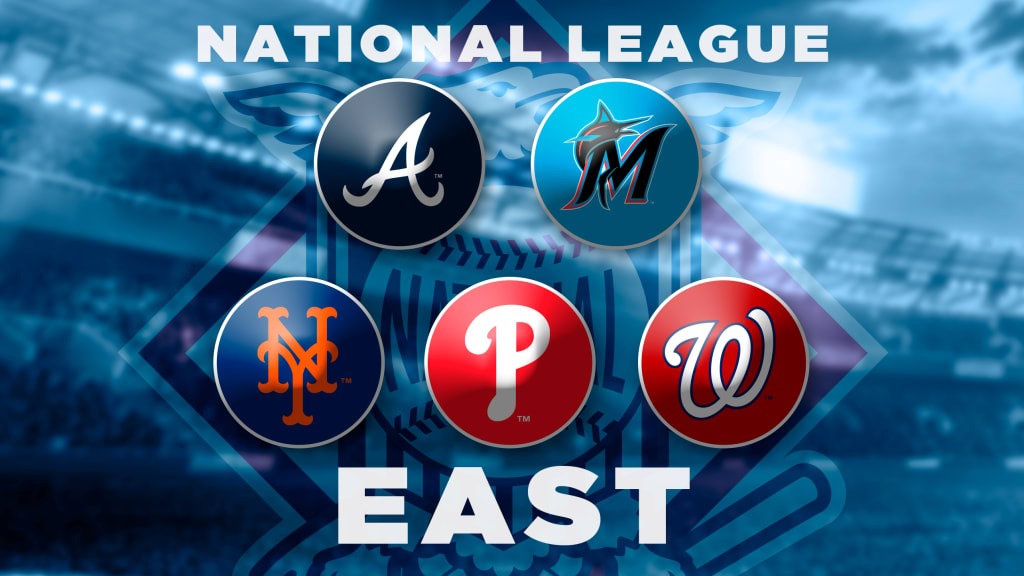
See ball, hit ball. Wait for your pitch. Don't chase.
These sayings make the art of hitting seem simple enough, but it's easier said than done. Pitch velocity continues to rise and stuff is nastier than ever, if Statcast is any indication. Look no further than the National League East, which is full of aces.
But the division also has its share of pesky batters -- from veterans to budding stars -- who can give even the best pitchers fits by working counts and not expanding the zone.
This week, MLB.com asked its beat reporters to choose which player on the team they cover has the best eye at the plate. Here are the results:
Braves: Nick Markakis
In 2019, Ronald Acuña Jr. had a team-best take percentage (73.3) against pitches thrown outside the strike zone, while Freddie Freeman had the highest swing percentage (82.6) for pitches thrown inside the zone, per FanGraphs. Markakis’ out-of-zone take percentage (72.6) was just slightly lower than Acuña’s, but his in-zone take percentage (38.4) was much higher than those produced by Freeman (17.4) and Acuña (28.5).
The fact that Freeman swings at a little more than eight of every 10 strikes he sees is not surprising considering his reputation as one of the game’s most aggressive hitters. Acuña’s numbers are encouraging because they show he already has a good sense of the strike zone and some of his in-zone takes might be a product of beneficial selectivity. But the young outfielder’s strikeout rate (26.3) indicates he has room to improve. For now, the best eye still belongs to Markakis, who struck out in just 12.6 percent of his plate appearances while manufacturing a team-best 88.8 percent contact rate last season. -- Mark Bowman
Marlins: Jesús Aguilar
After enjoying an All-Star season with the Brewers in 2018, Aguilar had a bit of a bumpy '19 with Milwaukee and Tampa Bay. He followed 35 homers in '18 with just 12 last year. Before claiming him off waivers in December, the Marlins did a deep-dive breakdown on the 29-year-old. Miami felt he performed better than his standard numbers demonstrated, and he projects to be its starting first baseman. Last season, Aguilar had an 11.7 walk percentage -- the highest mark of his career -- and a 22 percent strikeout rate. The slugger also doesn't chase pitches out of the zone much. According to FanGraphs, his O-Swing percentage (swings at pitches outside the zone) was 29.8 percent, compared to 35.6 percent during his All-Star season. -- Joe Frisaro
Mets: Brandon Nimmo
Among the 414 batters who saw at least 300 pitches outside the strike zone last season, Nimmo swung at only 17.9 percent of them to rank 16th in the Majors, according to Statcast. Just below him on that list is Joey Votto, widely considered to possess the league's best batting eye.
For Nimmo, part of that is thanks to an uncommonly patient approach that saw him offer at only 62.3 percent of pitches inside the strike zone in 2019, good for the lowest rate on the Mets. But much is also due to his keen batting eye and pitch recognition, which he trained as an amateur in Wyoming and hones constantly using video and strike-zone drills as a professional. It has paid dividends. Over the past three seasons, Nimmo ranks eighth in the Majors in pitches per plate appearance (among hitters with at least 1,000 PAs) and sixth in walk rate behind superstars Mike Trout, Aaron Judge, Votto, Juan Soto and Bryce Harper. -- Anthony DiComo
Nationals: Juan Soto
Some young players would be eager to step up to the plate and swing away. At 21 years old, Soto keeps a close eye. During his second Major League season, he led Washington and ranked third in the NL with 108 walks. Soto’s .401 on-base percentage trailed only Anthony Rendon on the team, and it was also fifth highest in the NL. When he swung, he had an impact. Soto's 34 homers tied Rendon for most on the Nationals -- and that was just during the regular season. During the Nats’ championship run, he compiled a .373 postseason OBP, including .438 with five walks and three homers in the World Series. Soto finds his own ways to continue improving, and he isn’t shy about it. One of his methods is asking pitchers if he can stand in at the plate while they throw bullpen sessions, as he did with Stephen Strasburg during Spring Training to get a look at his curveball. “That’s how I train my eyes,” Soto said. “I try to take bullpens.” -- Jessica Camerato
Phillies: Andrew McCutchen
You cannot fool McCutchen easily. He is patient. He knows the strike zone. He will not chase.
Consider these numbers over his 11-year career: McCutchen ranks 11th out of 223 qualified batters in on-base percentage (.378) and 37th in pitches per plate appearance (4.05). He makes pitchers work, which is why the Phillies will be thrilled to have him hitting leadoff whenever plays resumes. McCutchen simply does not swing at pitches outside the strike zone. Out of 299 batters who have seen at least 5,000 pitches outside the strike zone since 2008, McCutchen ranks 20th, swinging at only 20.9 percent of them, per Statcast. -- Todd Zolecki
